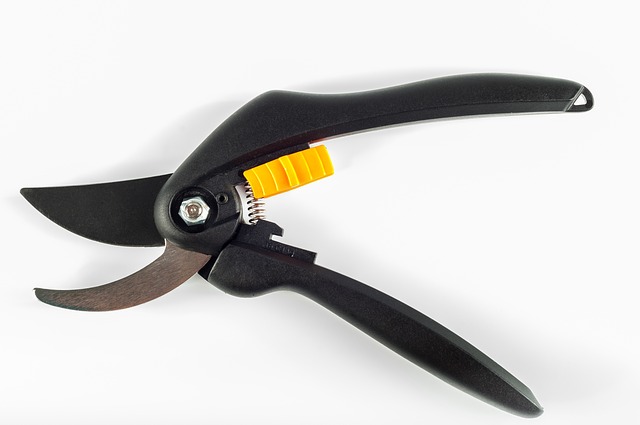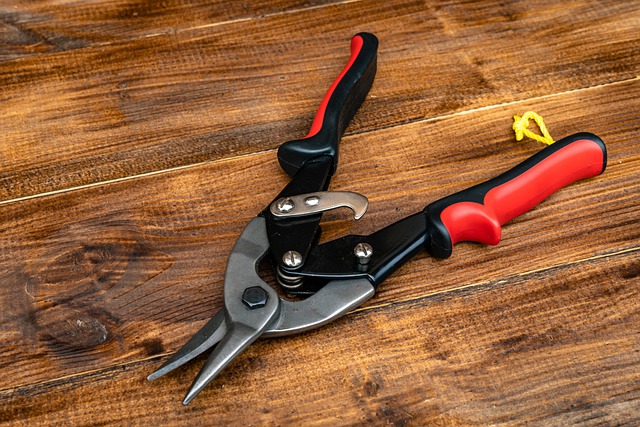This snippet has been extracted from “The pruning book” by “Lee Reich”. Pruning tools are probably the most-used tool when it comes to pruning shrubs, flowers, vines, and small growth on trees. “Tree Service in Oakland” provides you relevant information on such tools and its usage.
Always use a pruning tool appropriate to the size of the pruning cut. Too many gardeners attempt to shimmy and wiggle hand-held pruning shears through branches that dare too thick to cut effectively with this tool. Using the wrong size tool makes pruning more difficult-even impossible-and leaves a forlorn-looking –plant with ragged stubs. You could even damage the tool itself! Before purchasing a pruning tool, think about what you will be cutting.
It is sometimes stated, especially in older gardening books, that all pruning should be done with a knife or with just your thumbnail. The implication is that timely pruning removes any growth before it is beyond the size that can be handled by either of these “tools.” (The quotation marks are for the thumbnail.) Perhaps so, in an ideal world, or for a person growing only a half-dozen houseplants in an apartment. But pruning a garden full of plants with your knife and thumbnail is not practical. And even if it were practical, some limbs do not display their character at an early enough age to signal their need for removal? And how about that wrist-thick limb, dead from disease and now needing removal?
The following is a list of pruning tools and the scenarios in which to use them.
Thumbnail
The thumbnail is a fine and convenient pruning tool, ideal for such tasks as pinching out the tips of outdoor chrysanthemums and indoor avocado trees. Do not overlook the rest of your hand as a useful pruning implement. Prune suckers from a tomato plant by just grabbing them, then snapping them off with a downward jerk. Snap off unwanted waterspouts from a tree in the same way, the minute you notice them. There is no need to trek to the garden shed for any other equipment. (If you never considered your hand as a pruning tool, stretch your mind and also consider these other specialized “tools”. A shovel for root pruning; a stream of water from your hose or a broom handle with piece of hose attached to thin blossoms from a fruit tree).

Pruning knife
The pruning knife comes highly recommended by those gardeners with the expertise to use it. This knife differs from other knives in having a curved blade, which helps it keep contact with the branch as you cut. If you choose to use a pruning knife, buy one with a folding blade (for safety in carrying it) and a thick handle that is easy to hold without causing blisters.
Hand shears
Personally, I have never been able to see the advantage of a pruning knife over a good pair of hand shears, what the British call secateurs, the hand shears will never slip and nick nearby stems and will cut through wood up to ½ in, thick, which is more than you could ask from a pruning knife. As mentioned previously, a pair of hand shears is probably the one tool you will need if you own but one pruning tool.

Because a pair of hand shears is such a useful tool- one that I often drop into my back pocket before I walk out into the garden-checkout the style, weight, hand fit, and balance of several models before you settle on one . If I’m going to stroll around my garden, I:m sure to come upon some stems that need pruning, so I’ll always throw my compact pica shears or slightly larger but heavier-duty ARS shears into my pocket. For such occasional pruning, I’ll also want the shears to conveniently open or lock closed. The locking mechanism loosened on one of my pica shears so that the shears keeps slipping open when I want it closed, and find that moving the locking mechanism requires both hands on my otherwise excellent bah co shears. (This design was deliberate, I am told to avoid stress from stretching your thumb). The are shears unlock easily, but not casually, with a squeeze on the handles. For more deliberate pruning excursions, I might suit up with a pruning holster and a heavier pair of shears.
Beyond the basic design, certain special features found on some pruning shears might appeal to you, you can buy special shears tailored to fit left hands or small hands, although on some shears the maximum blade opening shrinks when adjusted to the smaller hand size. The blades of some bypass shears-pica, for example-are hooked at their ends to help prevent stems from slopping free of the jaws as you cut. Other shears achieve the same effect with a rolling action of one bypass blade along the other as the handle is squeezed. To make it easier to slice through thick stems, some shears have ratchet action; weigh the virtue of more power against the need for repeatedly squeezing the handles for each cut. Fiskars, Bahco, and Felco are among the manufacturers that ease hand strain by having models with hand grips that rotate as you make the cut and/or varying the angle of the blades in relation to the handles. And for the professional landscaper or orchardist, confronted with hours of pruning at a stretch, pneumatic or electrically operated hand shears are available.
Lopper
For pruning branches larger than 1/2 in. across, up to about 1 ½ in, in diameter, you need lopping shears, usually just called a “lopper,” this tool is essentially the same as hand shears, except that the blades are heavier and the handle is a couple of feet long. Like hand shears, the loppers business end may be either of the anvil or bypass type. The long handles of the lopper give you leverage to cut through those larger stems and allow you to reach into the base of an overgrown rose or gooseberry bush without being attacked by thorns, some loppers gain extra cutting power with a gear or a ratchet mechanism that allows the blades to sever wood even 2 in thick. Those extra mechanism do add weight to the end of the tool, which, with its long handles, may become unwieldy after a few hours of use.
Wending the business end of a lopper in among a tangle of branches can leave little or no room to open or close the long hands-a problem overcome with at least a couple of loppers. The Fiskars long neck swivel lopper puts the blades at the end of a foot-long tube that reaches in among branches. What’s more, the tube can be rotated to a convenient angle. The ARS Long-Reach lopper also has a rotating head, and its head is 3 ft beyond the handles, so you can reach fairly high as well as in among tangled branches.
Continue reading on What tree to plant

